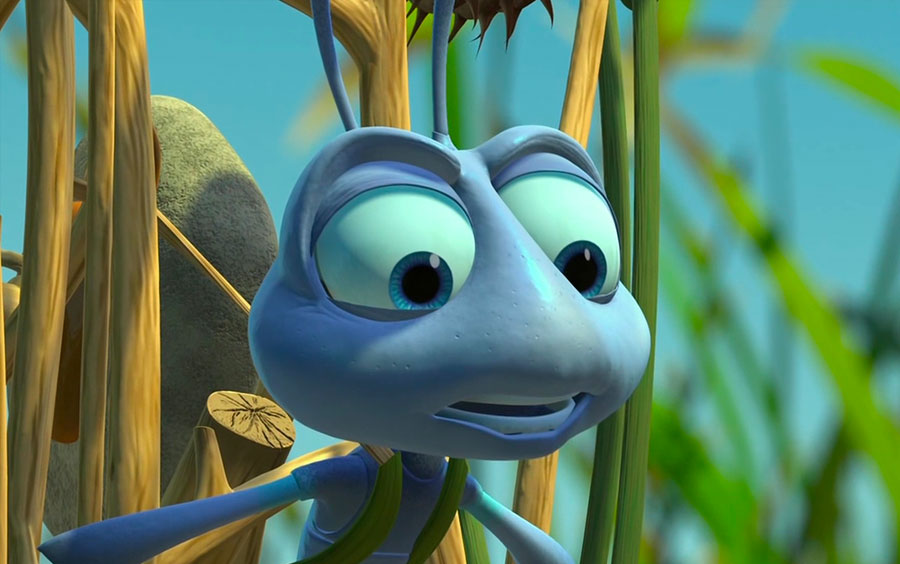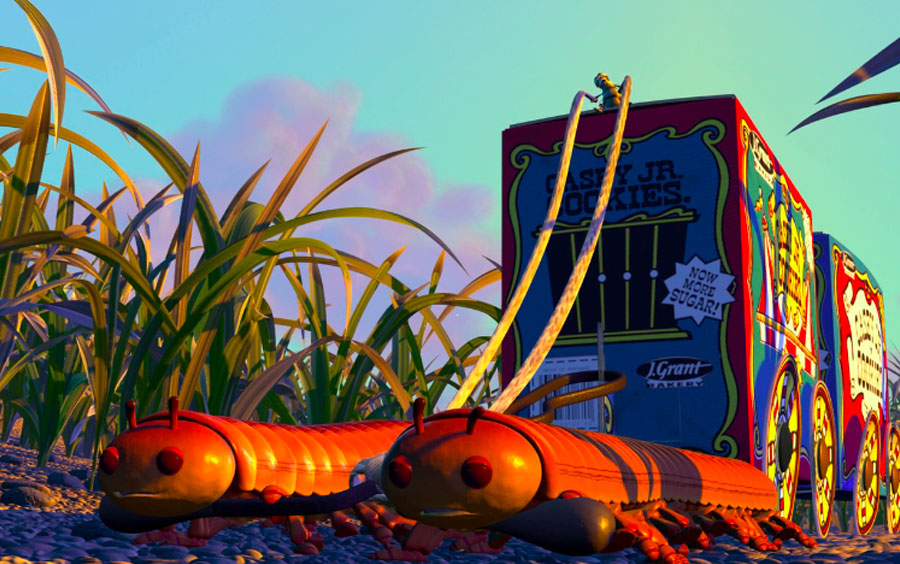10 Things You May Not Know About A Bug’s Life

1) One of the first things the team at Pixar needed to do was to examine different bugs to see how they moved and interacted with their environment. They watched several insect documentaries but felt they needed to do more. This was when the idea for a bug cam was hatched. Hardware engineer Neftali Alvarez and his crew proposed mounting a small camera on tiny wheels, allowing the creative team to see the world from a bug’s point of view. This produced some surprising results. For one, the sun shining through the leaves and flowers gave the impression of stained-glass windows, giving the landscape an aura of translucency. Additionally, it was noted that the hues in the surrounding plants changed throughout the day, which inspired the use of vibrant colors throughout the film.

2) The bug cam yielded another surprise when it was used to examine a beetle walking along the sidewalk outside the Pixar studios. The creative team was so taken with the humorous gait of the insect that it inspired the creation of Dim.
3) Another challenge came in the form of sound design, specifically how to recreate the sounds of the bugs’ wings flapping. After lots of experimenting, a wide variety of techniques were developed for different characters. For example, flexible drinking straws were bent and straightened to create the sound of the grasshoppers. The shells of uncooked crabs were cracked open for an extra bit of crunch. Motorcycle engines were blended with a dragonfly’s buzzing to create the sound of the grasshopper herd. To mimic the sound of Hopper twitching his antennas, the team used fingernails scratching on a blackboard. Dot’s wings required a lighter touch, so the designers combined the sound of someone blowing across a waving playing card with a buzzing kazoo. Other effects included a helicopter for Dim’s wings, World War II-era planes, hummingbird wings for the crowd noises of Bug City residents, and a rocking chair for Slim’s movements. Not every sound was created from scratch. The sound team also incorporated the sounds of mosquitoes, bees, and a bug flying into a bug zapper.

4) Another challenge the production team faced was making the ants appear likable. Ants are rather fearsome looking in real life (especially up close), so the creative team took out the mandibles and designed the ants to stand upright, replacing their normal six legs with two arms and two legs. The grasshoppers, in contrast, received a pair of extra limbs to appear more menacing.
5) To animate the ant colony sequences, in which as many as 800 ants might appear, Technical Director Bill Reeves developed new software. The new software would only require the artists to animate a handful of groups that were made up of eight individual “universal ants.” Each ant could be automatically modified in small ways to ensure that no two ants looked the same. For instance, the animator could alter the eye or skin color.
6) This marked the first time subsurface scattering was used in a Pixar film. What is subsurface scattering? Rather than having light bounce off a subject, subsurface scattering allows light to penetrate the surface of a translucent object (such as skin), bounce around, and exit at a different point. The degree to which the light is scattered and reflected can be controlled to recreate convincing recreations of semi-transparent objects. The new technique was tried in the short film Geri’s Game, which was released along with the film.

7) The creative team went dumpster diving to create P. T. Flea’s Circus! Specifically, they looked for items that could be transformed props. The team ended up incorporating everything from peanut butter cup wrappers and egg cartons to ear swabs and a broken dog collar.
8) When Flik enters the city, one of the billboard signs advertises the stage production of The Lion King. The Broadway show opened in 1997, a year before the release of A Bug’s Life.

9) Inside the bar, the pianist can be heard playing “The Itsy-Bitsy Spider.” Likewise, when the grasshoppers hang out by the discarded sombrero, they sing “La Cucaracha,” which translates to “The Cockroach.”
10) In one of the earliest instances of the Pixar tradition of including references to their other movies in their films, Flik shouts out Buzz Lightyear’s catchphrase, “To infinity and beyond!” in an outtake shown during the credits.
Enjoy the magic of Disney all year ’round with Celebrations Magazine!

